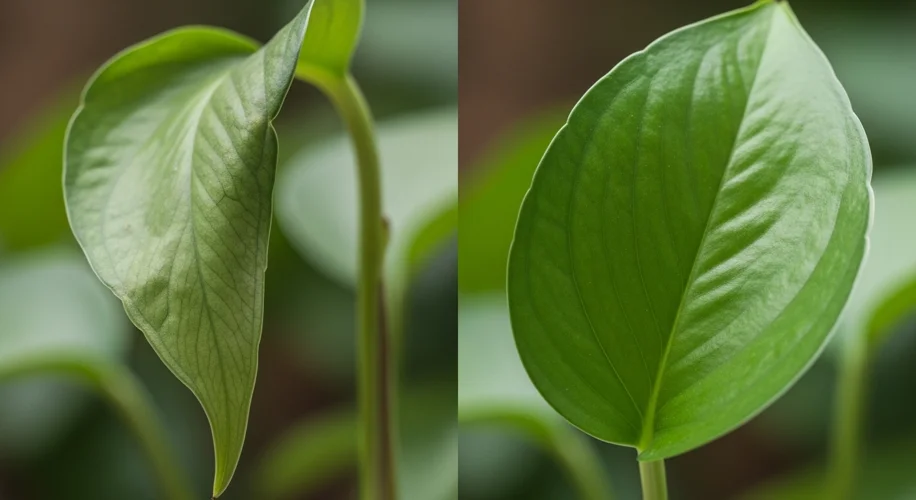I love my plants. They’re more than just decorations; they’re living things that bring so much joy and a bit of wildness into my home. Lately, I’ve been fascinated by the subtle changes in my pothos plants, especially how dramatically they can perk up after a good drink of water. It’s a small thing, really, but it’s a powerful reminder of how essential water is for life.
I was repotting a few things the other day and noticed one of my pothos vines looked a little… sad. The leaves were drooping, looking limp and almost dusty, even though I’d watered it a few days ago. It can be tricky to tell exactly when a plant needs water, especially when it’s not a drastic wilt. So, I took a picture of one of its leaves. It was definitely looking a bit dejected.
Picture 1: The droopy leaf.
I decided to give the whole plant a good, thorough watering, making sure the soil was evenly moist but not waterlogged. Then, I waited. It’s amazing how quickly plants can respond when they’re thirsty. Within a few hours, I went back to check on it, and the change was remarkable. That same leaf that had been so lifeless was now plump, firm, and pointing upwards, reaching for the light again.
Picture 2: The same leaf, perked up.
It’s this simple transformation that got me thinking about what’s happening beneath the surface. Plants, just like us, need water to survive. Water is crucial for photosynthesis, the process where plants use sunlight to create their own food. It also helps transport nutrients from the soil up through the plant, all the way to those leaves.
When a plant is thirsty, it closes tiny pores on its leaves called stomata. These pores are usually open to allow the plant to ‘breathe’ – taking in carbon dioxide for photosynthesis and releasing oxygen and water vapor. This release of water vapor is called transpiration. When the plant is stressed from lack of water, it closes these stomata to conserve moisture, which is why the leaves start to droop and look less vibrant. They’re essentially conserving their resources.
Once I gave my pothos a drink, those stomata could open up again. The water filled the plant’s cells, plumping them up and giving the leaves their firm structure back. It’s like giving a wilted salad a cold bath – it revives it! For the pothos, this means it can get back to doing its essential jobs: breathing in CO2, releasing oxygen, and looking beautifully lush.
So, how can we better tell when our plants are thirsty?
- The Finger Test: This is the classic. Stick your finger about an inch or two into the soil. If it feels dry, it’s probably time to water. If it feels moist, hold off.
- The Pot Weight: Get to know the weight of your pot when it’s just been watered and when it’s dry. You can often feel the difference. A lighter pot usually means it’s time for a drink.
- Observe the Leaves: While pothos show a clear droop when thirsty, other plants might have leaves that curl slightly or lose their sheen. Pay attention to your specific plant’s cues.
- Wilting Isn’t Always Thirst: Sometimes, overwatering can lead to wilting too, because the roots can’t get enough oxygen. It’s a bit of a balancing act!
Seeing that pothos leaf bounce back was a simple but powerful visual lesson. It’s a gentle nudge to pay attention to these green companions and provide them with what they need to thrive. It’s amazing what a little bit of water can do!

